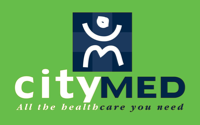A hernia is a common medical condition that occurs when internal tissue pushes through a weak spot in the surrounding muscle wall, often forming a noticeable bulge. Hernias can develop at any age and affect both men and women, though certain types are more frequent in men.
Timely hernia diagnosis and treatment are important to prevent complications such as pain, tissue strangulation, or obstruction. At CityMed in Auckland, experienced doctors provide accurate diagnosis and reliable surgical repair, ensuring safe and effective hernia treatment in NZ.
What Is a Hernia?
A hernia occurs when tissue—usually part of the intestine or abdominal lining—pushes through a weakened area in the muscle wall of the abdomen. This weakness can be congenital or develop over time due to strain, injury, or natural aging.
Hernias most often appear in the:
- Abdomen (abdominal hernia or ventral hernia)
- Groin area (inguinal hernia)
- Belly button (umbilical hernia)
- Diaphragm (hiatal hernia, where the stomach moves upward into the chest)
If left untreated, hernias can enlarge or cause discomfort during physical activity, lifting, or coughing.
Common Types of Hernia
At CityMed Hernia Clinic Auckland, the most frequently treated hernias include inguinal, femoral, and umbilical types. Each has distinct causes and patterns:
1. Inguinal Hernia
- The most common form, particularly in men.
- Occurs when tissue or intestine passes through a weak spot in the lower abdominal wall into the groin or scrotum.
- May cause a lump, pressure, or burning sensation when lifting or coughing.
2. Femoral Hernia
- More common in women.
- Appears as a bulge in the upper thigh or groin when abdominal tissue pushes through near the major blood vessels of the leg.
- Higher risk of complications, often requiring surgical repair.
3. Umbilical Hernia
- Found around the navel (belly button).
- Caused by a weak area in the abdominal wall that once allowed the umbilical cord to pass through.
- Common after pregnancy or in people who are overweight.
What Does a Hernia Feel Like?
Most hernias produce a visible or palpable lump under the skin that may become more pronounced when standing, coughing, or straining. Typical hernia symptoms include:
A bulge or swelling in the groin, abdomen, or navel area
- A feeling of heaviness or pressure
- Dull ache or discomfort during activity
- Pain that improves when lying down
Patients at CityMed commonly describe a pulling sensation or mild ache rather than sharp pain. However, sudden severe pain or redness could signal a strangulated hernia, requiring urgent medical attention.
How Can You Get a Hernia?
Hernias develop from a combination of muscle weakness and increased pressure within the abdomen.
Common causes of hernias include:
- Heavy lifting or frequent straining
- Chronic coughing or constipation
- Previous abdominal surgery (scar tissue weakening)
- Pregnancy
- Obesity or significant weight gain
- Aging, which reduces muscle elasticity
At CityMed Auckland, many hernia patients are active adults or tradesmen whose work involves heavy lifting, as well as post-surgical patients developing incisional hernias near old scars.
Diagnosis & Treatment Options
How Are Hernias Diagnosed
Diagnosis is typically made during a physical examination. In some cases, imaging such as an ultrasound or CT scan is used to confirm the diagnosis or assess complex hernias.
Treatment at CityMed
CityMed offers both mesh and no-mesh (Desarda) repair options:
Open Mesh Repair (Lichtenstein Technique)
- The standard and proven surgical method for groin hernias.
- Performed under local anaesthetic with sedation.
- A small mesh patch reinforces the weak spot to prevent recurrence.
- Patients go home the same day.
No-Mesh (Desarda) Repair
- A modern, tension-free repair using natural tissue instead of synthetic mesh.
- Ideal for certain patients who prefer a non-mesh option.
Umbilical and Femoral Hernia Repairs
- Similar outpatient procedures with local anaesthetic.
Recovery and Aftercare
- Light activities may resume in 1 week.
- Full recovery usually takes 2–3 weeks.
Post-surgery instructions include:
- Rest for 24 hours
- Remove dressing after 48 hours
- Wear supportive underwear
- Avoid heavy lifting until cleared by your surgeon
CityMed’s experienced team provides clear post-operative care and follow-up to ensure smooth recovery.
When to See a Doctor
Seek medical attention immediately if you experience:
- Sudden, intense or persistent pain
- A lump that cannot be pushed back in (non-reducible hernia)
- Redness, swelling, or fever
- Nausea or vomiting
These may indicate a strangulated hernia, where blood flow to the trapped tissue is cut off — a medical emergency.
CityMed advises patients to contact their clinic promptly if symptoms worsen or change.
FAQs
1. Can a hernia fix itself?
No. A hernia will not heal on its own and may enlarge over time. Surgery is the only permanent solution.
2. How long is the recovery after hernia surgery?
Most patients return to light duties after a week, with full recovery in 2–3 weeks, depending on the type of repair.
3. Will I need a general anaesthetic?
Not usually. CityMed performs hernia operations under local anaesthetic with sedation, reducing risk and recovery time.
4. Is hernia surgery painful?
Because of the sedation and local anesthetic agents, patients often tolerate the procedure well without significant experience of pain. Post-operative swelling, pain, and bruising are expected temporarily and are adequately managed by pain relief and lifestyle adjustment.
5. What happens if I ignore a hernia?
Ignoring a hernia can lead to progression in size, discomfort, and—in rare cases—strangulation, requiring emergency surgery.
Conclusion
Hernias are common and treatable conditions that should never be ignored. Early diagnosis and modern surgical repair ensure a safe, lasting outcome. At CityMed Hernia Clinic in Auckland, patients receive expert care using advanced open and no-mesh repair techniques with minimal downtime. Book online.

